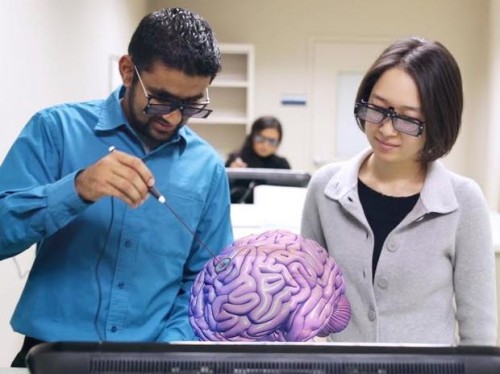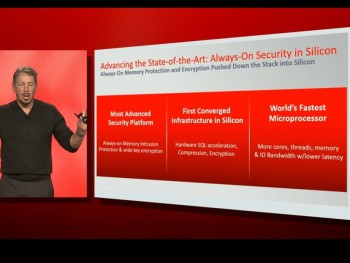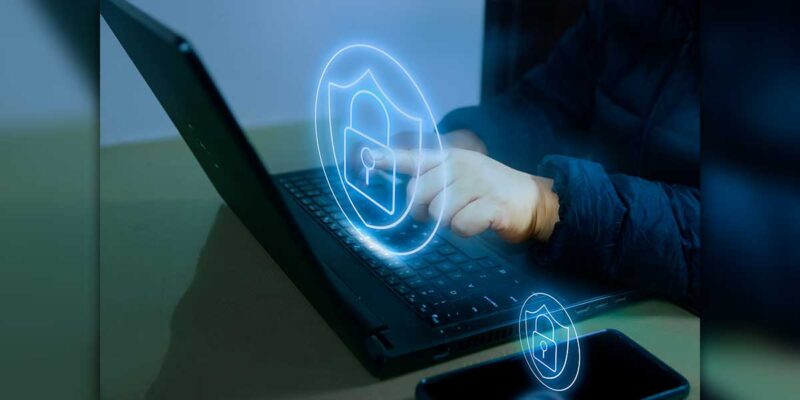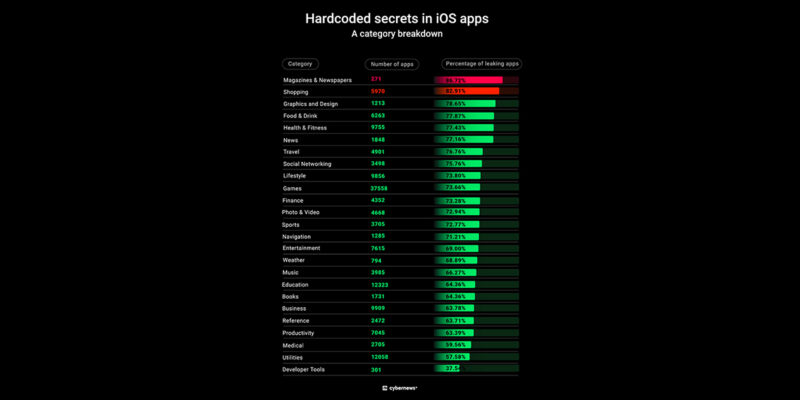Convergent TechWeek 10/30
Virtual Anatomy 101
Robert Hasel had an idea about how to change the teaching of human anatomy for medical, dental, and health science students which, instead of cutting into a real human corpse, involved wanting his students to get immersed via virtual and augmented reality.
Hasel is associate dean for simulation, immersion, and digital learning at Western University in Pomona, California, and after spending 12 years trying to figure out how to turn his idea into reality, the health science students at Western this fall walked into the J and K Virtual Reality Learning Center for the first time to learn about anatomy through digital immersion and interactivity.
Starting out in private practice as a dentist, Hasel transitioned into education and began thinking about ways to best prepare students for life after school. “I saw the need to create new learning environments for students, I wanted to really approach the human nature of learning and how we interact with our environment and learn from it,” Hasel said.
The learning center offers a variety of tech including virtual reality and augmented reality. They use Oculus Rifts to power an experience that takes students inside the human body on a microscopic level, complete with guided narration. The iPad represents an ideal device for deployment of anatomy study, because of its portability and interactivity. The study of function and motion are enhanced through the use of the Learning Center’s multiple iPads which employ software and specially designed models to enhance anatomical study.
TechRepublic: Digital cadavers: How virtual reality and augmented reality can change anatomy class
Will the Nation’s Cyber Defenses Be Fortified or Privacy As We Know It Compromised?
This week, the U.S. Senate passed legislation aimed at bolstering the country’s cyber defenses, advancing what’s considered to be the first serious attempt in Congress to combat computer hacks that have hit a growing number of businesses and government agencies in recent years. The bill, which cleared the Senate by a vote of 74-21 with strong bipartisan support, would expand liability protections to companies that choose to voluntarily share cyber-threat data with the government. It must be reconciled with two similar information-sharing measures that passed the House of Representatives earlier this year. The White House announced support for the Senate bill, although desire for certain revisions has been stated before it lands on the President’s desk.
The Cybersecurity Information Sharing Act (CISA) is a proposal that had been languishing in the Senate for several years partly because of privacy groups’ concerns it would place more personal information into the hands of the National Security Agency and other government spies. Business interests, including the Chamber of Commerce, have argued an information-sharing law is necessary to allow the private sector to cooperate more closely with the government on detecting and minimizing cyber threats without fear of lawsuits.
Another viewpoint though considers this to be a crushing blow to the tech industry as well as privacy advocates as a huge setback for tech’s lobbying efforts on surveillance issues. In the wake of the revelations of former government contractor Edward Snowden, large tech companies have pushed the government to curtail surveillance practices, most recently with the passage of the USA Freedom Act in June.
Even some of the bill’s supporters have conceded the bill is only a first step to shore up U.S. cyber defenses, which are constantly under assault by hacking groups and foreign nation-states like China and Russia, according to government officials – the legendary Sony hack of course being fresh in everyone’s minds, as well as major breaches in the federal government. Senate Democratic leader Harry Reid went as far as to state that CISA was “far too weak.”
Venture Beat: Senate approves major cybersecurity bill; critics say it won’t prevent hacks
TechCrunch: Senate Passes Cybersecurity Threat Sharing Bill That Tech Hates
Oracle’s Larry Ellison Looks to Put the (Tech) Scare Into Everyone
As for the fear side of cyber…
CEO Larry Ellison announced a major new way of securing computers and software applications this week during Oracle’s huge tech conference in San Francisco. He’s not focusing on protecting people from what hackers steal today, he’s actually looking at what lies beyond with what he considers to be even scarier hacks of the future. It’s been pointed out that hackers today tend to steal information – like credit cards – where they can sell them on the internet via sites like Rescator. In speaking about Rescalator, Ellison stated “That isn’t even on the dark web” which is known as the criminal internet which requires special browsers to access. “These servers are in Russia nothing we can do about it.”
The real scare statement – based in reflecting on the Stuxnet virus, a joint U.S.-Israel project known for reportedly destroying roughly a fifth of Iran’s nuclear centrifuges by causing them to spin out of control, faster than they were supposed to go… “You think stealing data is bad, wait until you can change data.”
He believes Oracle has solved that problem with something new called “Always-on Security in Silicon.” meaning that products built with Oracle’s latest M7 SPARC chips will have a bunch of security features built-into the chip and always turned on. IT professionals will not be able to turn these features off.
With these chips, hackers won’t be able to hack into a computer’s memory, their intended target, in order to steal data as well as to change it. All data in turn will also be encrypted, with encryption and decryption working nearly instantaneously with no drag on a computer’s overall performance, as Ellison has promised.
Business Insider: Larry Ellison just painted a frightening picture of what hackers could do next
Supplement – ZeroFOX: What is the Dark Web?
IBM Branches Out in Enterprise IoT With Acquisition of The Weather Company
IBM has announced that it is acquiring The Weather Company’s B2B data business and associated properties in a deal that will bolster their Internet of things efforts. Terms of the deal weren’t disclosed, however the Wall Street Journal reported the deal was valued at more than $2 billion.
IBM created an Internet of things unit in March and forged a pact at that time to improve weather forecasting with The Weather Company as well. The general theme was to use The Weather Company’s data and sensors and combine it with IBM’s analytics and Watson platform. IBM’s cloud unit in turn managed to dent The Weather Company’s relationship with Amazon Web Services.
Weather data is being seen by IBM as a key cog in the enterprise Internet of things. They’ll acquire The Weather Company’s data experts, forecasting tools and cloud platform. The Weather Company will also give IBM more touch points via apps, flight data and information products.
With this, IBM in many respects is buying a platform from The Weather Company that it can use across its businesses.
ZDNet: IBM buys The Weather Company’s B2B operations: Will an Internet of things boost follow?
Verizon Introduces ThingSpace – IoT and Smart City Strategy
Verizon announced plans for simplifying Internet of Things technologies, introducing three end-to-end smart cities solutions: intelligent video, intelligent lighting, and intelligent traffic management. With this Verizon also launched ThingSpace.
The solutions are designed to help municipalities integrate dissimilar systems, monitor traffic and safety conditions in real-time, and manage their systems in a more dynamic way to improves efficiency and public safety. ThingSpace lets users manage IoT environments and related data, end-to-end, from device to network to application. Developers can build IoT solutions using Verizon’s extensive capabilities and innovation resources, and even if they are not Verizon customers they can code and test on the ThingSpace platform.
“Continued innovation in smart cities, connected cars and wearables demonstrates that IoT is the future for how we will live and work,” Mike Lanman, senior vice president of enterprise products at Verizon, said in a statement. “Despite the exciting potential, IoT is still too complex, too fragmented, too expensive to connect and too hard to scale. Success in that future relies on a leader that can cut through the complexity and change the IoT model. That’s where Verizon comes in.”
Information Week: Verizon IoT Strategy: Smart Cities, ThingSpace For Developers
NASA Consolidates Kennedy Space Center Data Center Environment
Earlier in the month, NASA’s Kennedy Space Center opened their brand new data center, designed to consolidate older facilities and to support multiple users within the NASA community. The consolidation is a part of NASA’s effort to meet the goal of the Federal government’s data center consolidation efforts which began in 2012.
The new 16,000 sq ft facility on the Kennedy Space Center campus is replacing five legacy data centers, which occupied a total of 45,000 sq ft of space. The new facility is not only considered to be more efficient than the five data centers, the greater benefit will be it’s capability in supporting significant growth in IT workload.
The new data center is also designed to be at least three times more efficient than the legacy data centers and able to take on additional work as the demand for its services grows as well.
The new data center will initially host projects and services for the Ground Systems Development and Operations Program, the Commercial Crew Program, the Launch Services Program, and more. The facility is also in process for certification as a LEED Silver building, and was also built to meet the Uptime Institute’s Tier II standard (even though not certified as such).
ZDNet: NASA data center consolidation saves more than IT space











